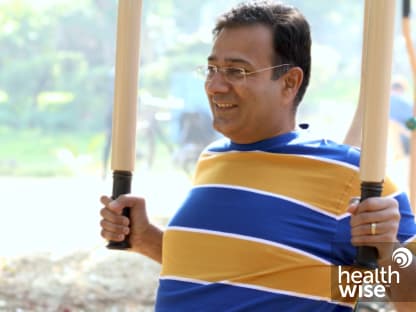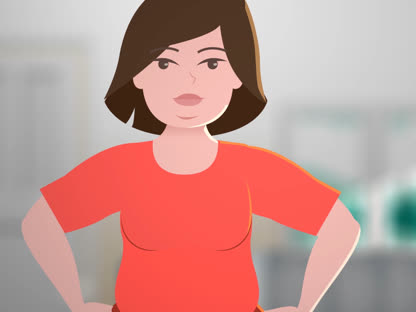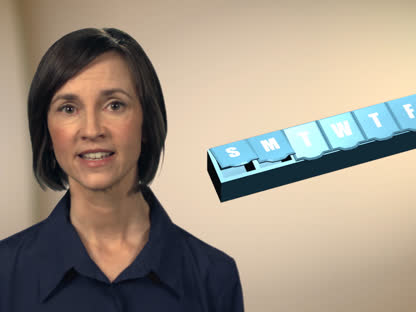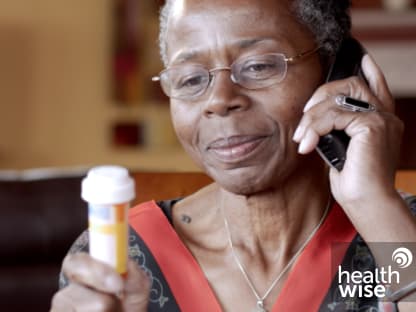Peripheral Arterial Disease
Condition Basics
What is peripheral arterial disease?
Peripheral arterial disease (PAD) is narrowing or blockage of arteries that causes poor blood flow to your arms and legs. PAD is most common in the legs.
PAD is often caused by fatty buildup (plaque) in the arteries. Over time, plaque builds up in the walls of the arteries, including those that supply blood to your legs. This can limit blood flow to the muscles and other tissues of the legs. PAD can make it hard for you to walk. It can also lead to tissue death. Sometimes part of the leg must be removed by surgery (amputation).
If you have PAD, you're also likely to have plaque in other arteries in your body. This raises your risk of a heart attack and stroke.
Peripheral arterial disease is also called peripheral vascular disease.
What causes it?
The most common cause of PAD is the buildup of plaque inside of arteries, including the ones that supply blood to your legs. This buildup leads to poor blood flow. Smoking, diabetes, high cholesterol, and high blood pressure all contribute to plaque buildup.
What are the symptoms?
Many people don't have symptoms. But symptoms can include weak or tired legs or trouble walking or balancing. While you're walking, your calf, thigh, or buttock may have aching or squeezing pain. If PAD gets worse, your legs, feet, or toes might have sores or be cold, numb, or painful. They might change color.
How is it diagnosed?
Your doctor will check the pulse and blood pressure in different areas of your body. Your doctor may also look at the skin of your legs and feet to check for changes caused by poor blood flow. You may have a Doppler ultrasound, which measures blood flow in the arteries.
How is PAD treated?
Treatment for PAD can help relieve symptoms, slow the progress of the disease, and lower your risk of heart attack and stroke. Treatment options include a heart-healthy lifestyle, a specialized exercise program, and medicine. Some people also have surgery or a procedure called angioplasty to improve blood flow.
Health Tools
Health Tools help you make wise health decisions or take action to improve your health.
Cause
The most common cause of PAD is the buildup of plaque inside blood vessels called arteries. Plaque is made up of excess cholesterol, calcium, and other substances in your bloodstream. Over time, plaque builds up in the walls of the arteries, including the ones that feed your legs. The plaque may narrow the space through which oxygen- and nutrient-rich blood can flow. Poor blood flow "starves" the muscles and other tissues in the lower body.
This process of plaque buildup usually happens throughout the body, including the leg arteries, coronary arteries, and carotid arteries. The buildup is called atherosclerosis or "hardening of the arteries." It slowly develops over a lifetime. Smoking, diabetes, high cholesterol, and high blood pressure help cause atherosclerosis and PAD.
What Increases Your Risk
Many things can increase your risk for atherosclerosis and PAD. These include:
- Smoking.
- Diabetes.
- High cholesterol.
- High blood pressure.
- Not being active regularly.
- A family history of atherosclerosis or coronary artery disease.
- Being African American.
The risk for PAD also increases with age.
People who have the disease in one part of the body are likely to have it in other places, including the legs.
Prevention
- Try to quit or cut back on using tobacco and other nicotine products. This includes smoking and vaping. Quitting smoking is one of the best things you can do to help prevent PAD. If you need help quitting, talk to your doctor about stop-smoking programs and medicines. These can increase your chances of quitting for good. Try to avoid secondhand smoke too.
- Eat a heart-healthy diet that includes vegetables, fruits, nuts, beans, lean meat, fish, and whole grains. Limit alcohol, sodium, and sugar.
- Get regular exercise. Try for 30 minutes on most days of the week. You may want to walk, swim, bike, or do other activities. Ask your doctor what level of exercise is safe for you.
- Stay at a weight that's healthy for you. Talk to your doctor if you need help losing weight.
- Try to get 7 to 9 hours of sleep each night.
- Manage other health problems, including diabetes, high blood pressure, and high cholesterol. If you think you may have a problem with alcohol or drug use, talk to your doctor.
Learn more
Watch
Symptoms
Many people who have PAD don't have symptoms.
If you have symptoms, they may include a tight, aching, or squeezing pain in your calf, thigh, or buttock. This pain is called intermittent claudication. It usually happens after you have walked a certain distance. The pain usually goes away when you stop walking.
Other symptoms may include weak or tired legs. You might have trouble walking or balancing.
If PAD gets worse, you may have other symptoms caused by poor blood flow to your legs and feet. You may have cold, tingly, weak, or numb feet or toes, sores that are slow to heal, or leg or foot pain when you're at rest. The skin on your legs or feet might change color. It may be pale, bluish, or purplish. Your skin may look shiny or have blisters.
Learn more
When to Call a Doctor
Call your doctor now or seek immediate medical care if:
- You have leg pain that does not go away even if you rest.
- Your leg pain changes or gets worse. For example, if you have more pain with normal activity or the same pain with decreased activity, you should call.
- You have cold, tingly, weak, or numb feet or toes.
- You have leg or foot sores that are slow to heal.
- The skin on your legs or feet changes color. It may be pale, bluish, or purplish.
- The skin on your legs or feet has blisters or looks shiny.
- You have an open sore on your leg or foot that is infected.
Exams and Tests
Your doctor will talk with you about your symptoms and past health and do a physical exam. Your doctor will check your pulse at your groin, behind your knee, on the inner ankle, and on the top of your foot. An absent or weak pulse in these spots is a sign of PAD. The pulse in your wrist, forearm, or neck may also be checked.
Your doctor may check the skin on your leg and foot to look for signs of limited blood flow. These signs include blisters, shiny skin, and changes in skin color.
Tests you may have to confirm PAD include:
- Ankle-brachial index (ABI) test. This checks blood flow by comparing blood pressure in the ankles and the arms.
- Doppler ultrasound. This may be used to measure blood flow in the arteries.
- Magnetic resonance angiogram (MRA) or computerized tomography (CT) angiography. These might also be done before a procedure or surgery.
Learn more
Treatment Overview
Treatment for PAD focuses on relieving symptoms, slowing the progress of the disease, and lowering your risk of heart attack and stroke.
Having a heart-healthy lifestyle can help you manage PAD. This lifestyle includes eating healthy foods, being active, staying at a weight that is healthy for you, getting enough sleep, and trying to quit or cut back on smoking or using other nicotine products.
If you have symptoms when you exercise, your doctor might recommend a specialized exercise program that may relieve symptoms. The goal is to be able to walk farther without pain.
You will likely take medicines to help lower your risk of heart attack and stroke. These include medicine to prevent blood clots, improve cholesterol, or lower blood pressure. You also may take a medicine that can help ease pain while you are walking.
People who have severe PAD may have bypass surgery or a procedure called angioplasty to improve blood flow to the legs.
Self-Care
Having a heart-healthy lifestyle can help treat PAD, slow the progress of the disease, and prevent problems. This lifestyle can also help reduce your risk of heart attack and stroke, which is important to do when you have PAD.
- Try to quit or cut back on using tobacco and other nicotine products.
This includes smoking and vaping. If you need help quitting, talk to your doctor about stop-smoking programs and medicines. These can increase your chances of quitting for good. Try to avoid secondhand smoke too.
- Eat heart-healthy foods.
These include vegetables, fruits, nuts, beans, lean meat, fish, and whole grains. Limit alcohol, sodium, and sugar.
- Be active.
Try to get at least 30 minutes of physical activity on most days of the week. Talk to your doctor about what type and level of exercise is safe for you.
- Stay at a weight that's healthy for you.
Talk to your doctor if you need help losing weight.
- Try to get 7 to 9 hours of sleep each night.
- Manage other health problems such as high blood pressure, high cholesterol, and diabetes.
- If you think you may have a problem with alcohol or drug use, talk to your doctor.
- Watch for new or worse symptoms.
Know when to call your doctor or get help right away.
- Avoid infections such as COVID-19, colds, and the flu.
Get the flu vaccine every year. Get a pneumococcal vaccine. If you have had one before, ask your doctor whether you need another dose. Stay up to date on your COVID-19 vaccines.
Take good care of your feet and legs
Take good care of your feet and legs. When you have PAD, even minor injuries can lead to serious infections.
- Check your feet daily for blisters, cuts, cracks, sores, broken skin, corns, calluses, or ingrown toenails.
Look at all areas of your feet, including your toes. You can use a mirror to see all parts of your feet. If you cannot see well, have someone help you. Make a note of any areas that tingle or are numb.
- Wash your feet every day.
- Use warm (not hot) water. Check the water temperature with your wrists or another part of your body, not your feet.
- Dry your feet well. Pat them dry. Do not rub the skin on your feet too hard. Dry well between your toes.
- Keep your skin soft.
Put a thin layer of lotion on your feet, but not between your toes.
- Keep your nails trimmed.
You may want to have someone else trim your nails to avoid cutting the skin around them.
- Wear shoes and socks that fit well and support your feet.
- You can get hard-sole shoes that provide better arch support and are less likely to be pierced through the sole.
- Break in new shoes slowly by wearing them for no more than an hour a day for several days.
- Look for shoes that have plenty of space around the toes. This helps prevent bunions and blisters.
- Avoid plastic shoes. They may rub your feet and cause blisters. Good shoes should be made of materials that are flexible and breathable, such as leather or cloth.
- Wear socks without seams.
- Change your socks daily.
- Protect your feet from injury.
- Look inside your shoes every day for things like gravel or torn linings, which could cause blisters or sores.
- Inspect your feet for blisters, cuts, or scrapes after outdoor activities.
- Put sunscreen on the tops of your feet when they will be exposed to the sun.
- Never go outside barefoot.
- If you have a foot problem, see your doctor.
Always get early treatment for foot problems. Call your doctor even for minor foot problems, unless you have already learned from your doctor how to handle these problems.
Learn more
Watch
Medicines
Medicines are used to treat symptoms, slow the progress of the disease, and lower your risk of heart attack and stroke.
Cilostazol (Pletal) treats leg pain that happens when you are active (intermittent claudication).
Other medicines can help lower your risk of heart attack and stroke. These include:
- Aspirin and other blood thinners. They help prevent blood clots.
- Statins and other medicines. They help lower cholesterol levels.
- Medicines to control high blood pressure.
- Medicines to control diabetes.
Learn more
Watch
Surgery
A procedure called angioplasty or a bypass surgery is done to improve blood flow to the legs and feet. This can relieve symptoms (intermittent claudication) and may help you walk farther without pain.
An angioplasty or surgery is also done to treat severely limited blood flow to a leg or foot. This limited blood flow can lead to open sores and serious skin, bone, and tissue problems (gangrene).
During an angioplasty, a doctor uses a catheter inside blood vessels to widen the narrow parts.
Bypass surgery redirects blood through a grafted blood vessel. This bypasses the blood vessel that is damaged. Surgeries include:
A surgery called endarterectomy is done to remove plaque from the blood vessel. It's most often done on the large artery in your groin and upper thigh area (femoral artery).
Learn more
Watch
Credits
Current as of: July 31, 2024
Author: Ignite Healthwise, LLC Staff
Clinical Review Board
All Ignite Healthwise, LLC education is reviewed by a team that includes physicians, nurses, advanced practitioners, registered dieticians, and other healthcare professionals.
Current as of: July 31, 2024
Author: Ignite Healthwise, LLC Staff
Clinical Review Board
All Ignite Healthwise, LLC education is reviewed by a team that includes physicians, nurses, advanced practitioners, registered dieticians, and other healthcare professionals.













